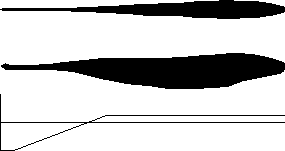
Figure 12.2: Side and Top Views of the Fish, and Internal Potential Model





We need to reduce the great complexity of a biological organism to a manageable physical model. The ingredients of this model are the fish body, shown in Figure 12.2, the object that the fish is sensing, and the water exterior to both the fish and the object.

Figure 12.2: Side and Top Views of the Fish, and Internal Potential Model
The real fish has some projecting fins, and our first approximation is to neglect these because their electrical properties are essentially the same as those of water.
We will assume that the fish is exploring a small conductive object, such as a small metal sphere. First, we reduce the geometrical aspect of the object to being pointlike, yet retaining some relevant electrical properties. Except when the object is another electric fish, we expect it to have no active electrical properties, but only to be an induced dipole.
We now come to the modelling of the fish body itself. This consists of a skin with electroreceptor cells which can detect potential differences, and a rather complex internal structure. We shall assume that the source voltage is maintained at the interface between the internal structure and the skin, so that we need not be concerned with the details of the internal structure. Thus, the fish body is modelled as two parts: an internal part with a given voltage distribution on its surface, and a surrounding skin with variable conductivity.
The upshot of this model is that we need to solve Laplace's equation in the water surrounding the fish, with an induced dipole at the position of the object the fish is investigating, with a mixed or Cauchy boundary condition at the surface of the fish body.